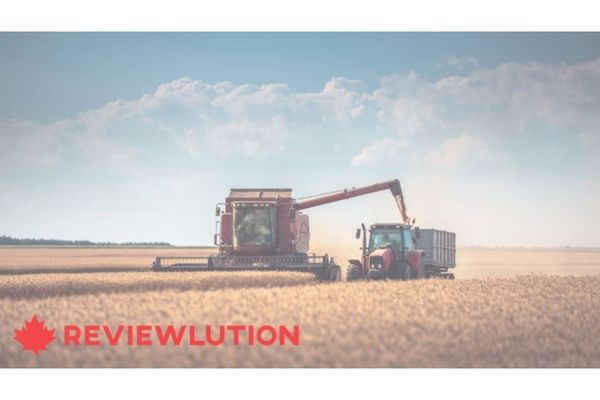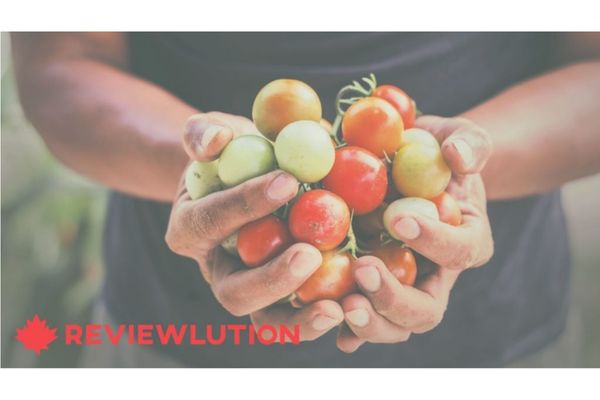19+ Incredible Canada Agriculture Statistics
Table of Contents
Let’s consider the following scenario:
Three people from widely different backgrounds have just one common interest – the agriculture of the Great White North.
Who are they?
A STEM major with a degree in biotechnology.
A true-blue environmentalist with a passion for sustainability.
A simple business owner looking to set up shop in farm produce.
Now:
All of them could benefit from a single item. Wondering what that could be?
The answer is Canada agriculture statistics.
Here’s a sneak peek:
Incredible Stats about Agriculture in Canada (Editor’s Choice)
- In 2018, the Canadian agriculture industry contributed 7.4% to Canada’s GDP.
- Despite the COVID-19 pandemic, Canadian exports of poultry and eggs increased by 8%.
- Canada’s foodservice sector suffered losses ranging from US$15 to US$35 billion due to the pandemic, Canadian food industry statistics reveal.
- In 2018, the Canadian food industry earned $33.9 billion, contributing 17% to manufacturing GDP.
- In 2020, Canadian farms reported a turnover of $71 billion.
- Canada exports $56 billion worth of farm products every year.
- The average farm size in Canada is 608 acres.
General Canada Agriculture Statistics
1. Looking at the history of agriculture in Canada, we can see there were 36 million acres of land for farm holdings back in 1871.
(Source: StatsCan )
This number grew to a whopping 169 million acres by 1971. Wheat is the most cultivated crop. Back in 1908, wheat farms stretched over 6 million acres and generated $91 million in farm gross value. Over the next 6 decades, the figures grew to 29 million acres of land, turning out $872 million worth of wheat.
2. Due to the COVID-19 pandemic in 2020, Canada could employ 50,126 foreign workers in agriculture, a 6.5% decrease from the previous year.
(Source: StatsCan)
Additionally, there were 23,985 foreign workers in food and beverage processing plants. This marks a 6.1% decrease from the preceding year.
3. According to Canada‘s agriculture economic statistics, Ontario reported the largest decline of temporary foreign workers in agriculture.
(Source: StatsCan)
Due to the pandemic, those employed in Ontario ranked at 22,834. This indicates a decrease of 1,418 workers from 2019.
4. British Columbia and Quebec also experienced a sharp fall of 799 and 709 temporary foreign workers in 2020.
(Source: StatsCan)
There were 13,094 such workers in Quebec in 2020. The highest percentage, 9.7%, worked on melon and vegetable farms. Overall, nearly half of all temporary foreign workers in Canada come from Mexico (48.6%), followed by Guatemala (19.3%) and Jamaica (14.9%)
5. Canadian farmers held 11.2 million cattle on January 1, 2021, Canada agriculture statistics for 2021 reveal
(Source: StatsCan)
Cattle and sheep numbers decreased steadily as of January 2021. However, the number of hogs on farms is on a slight rise. However, inventories reported a 25.3% fall from the peak that was reached in 2005.
What’s more:
Canadian ewes fell in number, estimated at 780,200. This marks the lowest headcount since 1999. On the other hand, there were 14 million hogs in January 2021, an 11.2% increase from 2011.
6. In 2020, Canadian farms reported a turnover of $71,713 billion, Canada agriculture statistics for 2020 confirm.
(Source: StatsCan)
Let’s talk about farm statistics in Canada because that’s where the money’s at.
Don’t believe me?
Well, statistics recorded some $60 billion from farm income in 2016. This number quickly grew to $62 billion in 2018, $66 billion in 2019, and early $72 million in 2020. It’d be safe to expect this upward trend to continue in the upcoming survey of 2021.
7. Ontario agriculture statistics report a net farm income of $659 million in 2019.
(Source: StatsCan)
This number is toppled by Quebec agriculture statistics of $862 million. Alberta reported a comparable figure of $769 million. However, Saskatchewan emerged as the leading province, with $2 billion in net farm income in 2019.
Ever wondered how many farms there are in Canada?
Here’s the deal:
8. Farming in Canada was practised in 193,492 sites as of 2016.
(Source: StatsCan)
This marks a fall from the 2011 census result of 205,730 farms. Though the average farm size in Canada is 608 acres, most farms range between 240 and 399 acres.
9. The use of windbreaks is the most frequent land practice, utilized in 70,417 farms.
(Source: StatsCan)
Do Canadian farmers do anything to enhance the quality of farmlands? They do plenty!
Canada agriculture statistics about land practices have some facts for us. What are the benefits of windbreaks?
Well, these shelterbelts are a surefire way to:
- Decrease soil erosion
- Increase crop yield
- Manage snow drifting
The second most widely used practice is rotational grazing. It’s practiced in 44,538 farms. How does that benefit Canadian agriculture?
- Increases soil fertility
- Assists in managing weeds
- Increases forage production
10. Farm produce in kind (meat, dairy, etc.) constitutes an important aspect of Canadian agriculture.
(Source: StatsCan)
We’ve said Canada is a major exporter of meat. However, it’s not all been good news:
In 2015, Canadian farmers earned $41,405 million from meat production. According to Canada agriculture statistics for 2019, their earnings fell to $34,426 million that year.
More Statistics on Canada Agriculture
11. Farm incomes in kind fell from $61,322 million in 2015 to $55,760 million in 2019, Canada agriculture statistics reveal.
(Source: StatsCan)
Wondering about how other Canadian agricultural products fared between these years? We’ve got you covered:
Maple syrup production generated an increased income of $3,054 million in 2019, up from $2,606 million in 2015. Poultry remained relatively stable between 2015 and 2019, with figures between $2,187 million and $2,349 million, respectively.
12. Canada’s agriculture exports statistics show overseas trade of grains and oilseeds was valued at $7.5 billion in 2020.
(Source: Trading Economics)
In a survey over the last decade, 2012 witnessed the highest export of these Canada crops, estimated at $8.3 billion. So, there’s been a pretty substantial decline in revenues in this sector over the past eight years.
13. Meat sales overseas have shown a stable increase over the years.
(Source: Trading Economics)
Canada’s statistics on agriculture exports reported $6.2 billion in meat sales in 2020. This number marks a hike from the lowest value of $4.5 billion in 2015.
14. Food statistics for Canada reveal that the food and beverages industry has been the top contributor to the country’s GDP since 2018.
(Source: Canada.ca)
Moreover, it has been the provider of the highest number of jobs since 2016.
The food sector’s contribution to Canada’s GDP has been on an upward arc over the last five years. In 2018, it earned $33.9 billion, dominating 17% of manufacturing GDP. Supplying 414,000 jobs in 2018 alone, the food industry remains a lucrative area for employment.
15. Recently, agricultural products worth $56 billion were sold overseas, food statistics for Canada reveal.
(Source: AgFunderNews)
This secured Canada the fifth position in the list of top exporters. So, agriculture companies in Canada play a fundamental role in taking the economy forward. However, these companies face stiff competition from US ones.
The thing is:
Canada’s agro-based startups generated $577 million, accounting for just 3.4% of funding. On the other hand, the USA was able to raise an impressive 48% of funding.
16. 217,000 people worked in Canadian agriculture in 2016.
(Source: AgNetWest)
If you’re wondering who works in the agriculture industry in Canada, the Canadian census of agriculture reserves answers.
Here are some quick facts from the 2016 census on the agriculture of Canada.
Out of a total of 217,000 people employed in agriculture, 193,223 were men. On the other hand, the number of women employees is relatively low at only 77,777.
Whether this unsettling statistic is to change will be revealed in the upcoming census of 2021.
But wait! There’s more:
Did you know the 2021 census is going to be dynamically redesigned? How? Well, a brand new questionnaire for Canadian farmers is in the works. Read all about it here.
17. As of 2020, the pandemic has affected agriculture employment in Canada as statistics roll out a total of 279,000 workers.
(Source: Trading Economics)
This number hasn’t fallen by too great of a margin from the 292,000 workers in 2019. However, the year 2008 marked the highest employment in Canadian agriculture, ranking at 326,000.
18. The pandemic struck the farming industry in Canada hard, with labour shortages accounting for $2.9 billion worth of lost sales in 2020.
(Source: CAHRC)
The sector reeled under excessive pressure on staff because foreign workers were absent due to COVID-19. In addition, other problems of Canada agriculture production were cancelled investments, halted expansions, overtime costs, and production delays.
19. Beef exports in April 2020 were down by 75% from 2019.
(Source: Foreign Agricultural Service)
While Canadian exports of poultry and eggs increased by 8% in the first half of 2020, this occurred largely due to a weaker Canadian dollar. The restaurant sector was also affected. Canada’s foodservice sector incurred considerable losses of between US$15 and US$35 billion in 2020, as provincial governments imposed strict lockdowns, forcing restaurants and pubs to close.
20. 2020 witnessed a hike of 19% in Canada agriculture exports.
(Source: CAHRC)
There was a concentrated hike of 28.3% in grains and oilseeds exports. Increased demand for barley from China sustained this growth. At the same time, the value of agricultural imports fell by 1.4% in 2020.
What does this mean for the economy?
Well, an analysis of Canada agriculture export statistics reveals that high export growth and low import combined to create an agriculture trade surplus of 17.6 billion in 2020.
And why is a trade surplus bad for the economy? Because it means increased prices and interest rates in the market. This trend does not help anybody.
Final Thoughts
So, what can we gather from these statistics?
Here are some final thoughts on agriculture in Canada:
Though a small portion of Canada’s soil is arable land, it is the site of booming and profitable agriculture. Canadian farmers have been making a profit margin of over 20% every year since 2000. Now that’s something!
The primary Canada agricultural products include wheat, canola, barley, beef, veal, poultry, and others. Additionally, the Great White North boasts extensive aquaculture. However, the sector faces some challenges like climate change, soil quality, and labour availability.
Government intervention in agriculture is substantial. The department of Agriculture in Canada operates as follows:
- Funds research and trade
- Assists farmers adopt new technologies to boost efficiency and enhance sustainability
- Regulates food quality and inspection and monitors food safety issues
Today, Canada remains a major agricultural exporter and contributor to the world economy.
Bottom line:
Though it could use some mechanization, agriculture remains one of the mainstays of the Canadian economy
FAQ
According to farm statistics, Canada has about 89 million acres of farmlands. This means that 53.1% of Canada’s arable land area is used for agriculture.
Among Canada crops, wheat is grown most widely, followed by canola and barley.
Statistics on Canada’s agriculture indicate that Saskatchewan is the largest agricultural province. In 2016, it generated 46.8% of the national farm produce. As a result, Saskatchewan also draws the highest farm income.
Agriculture employment statistics in Canada lists these areas of employment:
- Technology and innovation: Agriculture is a natural fit in STEM topics. It also benefits from microbiology, biotechnology, and digital tech. Innovation in this field involves robotic systems delivery.
- Food and health: Monitoring quality, working in food technology, and so on
- Sustainability: Monitoring the role of climate change on agriculture in Canada. Driving efforts for sustainable land practices and soil health.
- Economy: Surveying the impact of food production on Canada’s GDP. Mapping import/exports of agricultural products. Inspecting corporate involvement in Canadian agriculture
So, there you have it! Exploring prospects in Canadian agriculture doesn’t have to be a needle in a haystack. A study of Canada agriculture statistics opens up various avenues for exploring successful careers.













